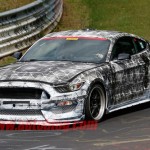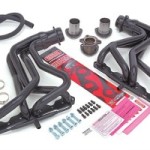Organize and Save
Organizing your parts inventory in your shop, building or warehouse is difficult whether it’s a few pieces or a few thousand parts.
Start by thinking about what it’s going to take to find that part later on. Have an area set aside for just parts, arrange it in categories and decide if shelves, wall hooks or a combination will work best. Because none of us are getting any younger and the numbers on the boxes seem to be getting smaller and smaller, we try to use the bottom shelf for only large boxes or over-stock items. There’s nothing more annoying than ordering a part and then finding you had one in a corner later on. So keep them close and easy to find to save money and time.
Ken Marlar
Sterling Engine Parts
Minneapolis, MN
More on Cam Gear Clearances
I recently read a Shop Solution about using a cam and cam gear to test for gear to block clearance on late, small block Chevys. For years we’ve used an aluminum hub that’s .002” under cam bearing bore size so a guy can do it when the block is stripped and cleaned. We turned down the scrap aluminum in our shop on the lathe, where it was also drilled and tapped. This can save you from damaging a new cam bearing and it is much easier to handle than a gear with the camshaft hanging off of it.
Randy Torvinen
Torvinen’s Machine
Menahga, MN
Yes, I’m in 100%
Many years ago, before I got into the engine business, I met an attorney who told a story that made sense then and still applies today. He said, “When I represent a defendant, I get paid 100 percent up front, that way I only have to worry about keeping my client out of jail as opposed to both getting paid and keeping him out of jail. If I have to worry about both, I’m going to worry more about getting paid.”
This applies today to many of our machine shop customers. Many times when I call on machine shops, I see jobs that are finished and just waiting to be picked up (and paid for) which creates a cash flow issue for the machine shop owner. They paid for the parts and the labor to build the engine and are forced to wait for their customer to come up with the cash.
I do have a few customers who use the old attorney system of getting paid 100 percent before starting the job. Those shops can worry 100 percent of the time about building the best engine possible and delivering it on time, rather than being paid, and their customers know it.
If your customer can’t afford to pay for the entire job before you start, what miracle to do you expect to happen for him to come up with the balance a week later when the job is done? Consider a 100 percent deposit on the job, and focus on completing the job on time, as promised.
Mark D. Sarine
Engine Rebuilders Warehouse, Inc.
Dania Beach, FL
Engine Bearings: Friction and Pre-Lubrication Issues
Overcoming friction is essential to successful bearing service. In order to understand friction, we must take a close-up look at a “smooth” surface. If we were to take a cross-section of a polished piece of metal, we would see that even a ground and polished surface has peaks and valleys (If magnified, picture two files rubbing together).
Measuring these peaks and valleys with a precision electronic instrument is how surface finish is determined. When two surfaces come together, the peaks make contact. Under load, the peaks tend to weld together. This is often called “micro-welding.” Sliding the mating surfaces across each other requires that these tiny welds be broken apart. This is friction. As the peaks are torn apart heat is created and tiny particles break off causing what we commonly refer to as wear.
With very few exceptions, engine bearings rely on hydrodynamic lubrication for successful performance. What that means is, in operation the shaft floats on a thin film of oil. This is what keeps friction and wear to a minimum. Thickness of the oil film depends on a number of variables within the engine such as load, speed and oil viscosity. Oil film thickness should not be confused with clearance, which is the space between the shaft and bearing.
Although the entire clearance space may be filled with oil, the shaft is forced off center by engine loads. This causes the shaft to operate very close to the bearing on one side of the clearance space. Generally speaking minimum oil film thicknesses in this loaded area of the bearing are typically in the range of only .0001” to .0002”. Even though these minimum oil film thicknesses are very small, engine bearings can have an almost unlimited life if proper operating conditions are established at assembly and maintained throughout the engine’s service life.
The engine’s oil film is generated by shaft rotation. At rest the shaft and bearing are in contact. On start-up the shaft rubs the bearing briefly. Running, the shaft pulls oil from the clearance space into the wedge shaped area between the shaft and bearing. The oil wedge lifts the shaft away from the bearing and supports it during engine operation. The force exerted by the oil wedge must be sufficient to offset the load applied by the engine or the oil film will collapse resulting in contact.
Because oil must be present in the bearing clearance space in order for the shaft to build an oil film, pre-lubricating an engine before initial start-up is extremely important. Even though everything inside the engine was coated with oil at assembly, oil can be thrown off rather quickly once the crankshaft starts spinning.
Actually pumping oil through the engine’s oil galleries is the only effective way to pre-lubricate the engine. This can be done on some engines by actually driving the oil pump with an old distributor shaft or oil pump priming tool in an electric drill. Where this is not feasible, supplying pressurized oil from an external source is the best way. Attach a hose from the oil source to the engine’s main oil gallery where the oil pressure-sending unit mounts. Pre-lubing in this way will prime the pump and filters and fill all oil passages.
Having explained a little about friction and wear and how a bearing’s oil film is formed, it is easy to see that oil film thickness and surface roughness are interrelated. Rougher surfaces demand thicker oil films to prevent friction and wear. Obviously, if the surface roughness of the shaft exceeds the oil film thickness, wear will result. Similarly, conditions which cause misalignment between shaft and bearing surfaces such as taper, barrel shape or hour glass in journals or housing will negatively affect the maintenance of an adequate oil film across the entire bearing surface. Modern bearing designs have also eliminated features like holes and grooves from the loaded areas of bearings because they tend to break-up the oil film and reduce the margin for operating safety.
Engine Pro Technical Committee with thanks to Mahle Aftermarket Inc.
The post July Shop Solutions appeared first on Engine Builder Magazine.
Read more here: Engine Builder Magazine

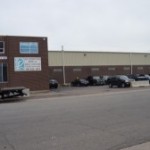


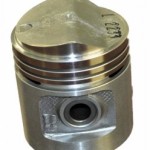

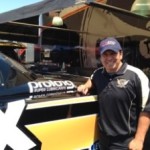
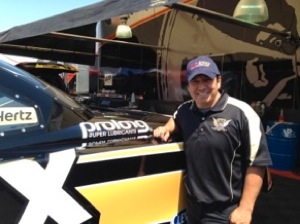

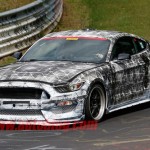
![Ford Mustang SVT caught looking fierce on the Ring [w/video] by Authcom, Nova Scotia\s Internet and Computing Solutions Provider in Kentville, Annapolis Valley ford mustang svt nurburgring 002 1 Ford Mustang SVT caught looking fierce on the Ring [w/video] by Authcom, Nova Scotia\s Internet and Computing Solutions Provider in Kentville, Annapolis Valley](https://o.aolcdn.com/hss/storage/midas/1f02c5801729b16c4fa165c7c6d7be1a/200424751/ford-mustang-svt-nurburgring-002-1.jpg)
